Archaeologists Open The Tomb Of Jesus For The First Time In Hundreds of Years
For centuries, Christians have made the journey to Israel in pursuit of pilgrimage, seeking out some of the holiest sites in their faith.
At the heart of this journey lies Jerusalem and the Church of the Holy Sepulchre, home to the tomb of Jesus. Here, Jesus was laid to rest after his death on the cross, making it his most universally accepted burial site to date.
The Burial Site of Jesus: A Journey Through History
The New Testament chronicles that Jesus was buried near the place of his crucifixion. It is believed that his tomb was built to enclose not only his body but the cross on which he was crucified.
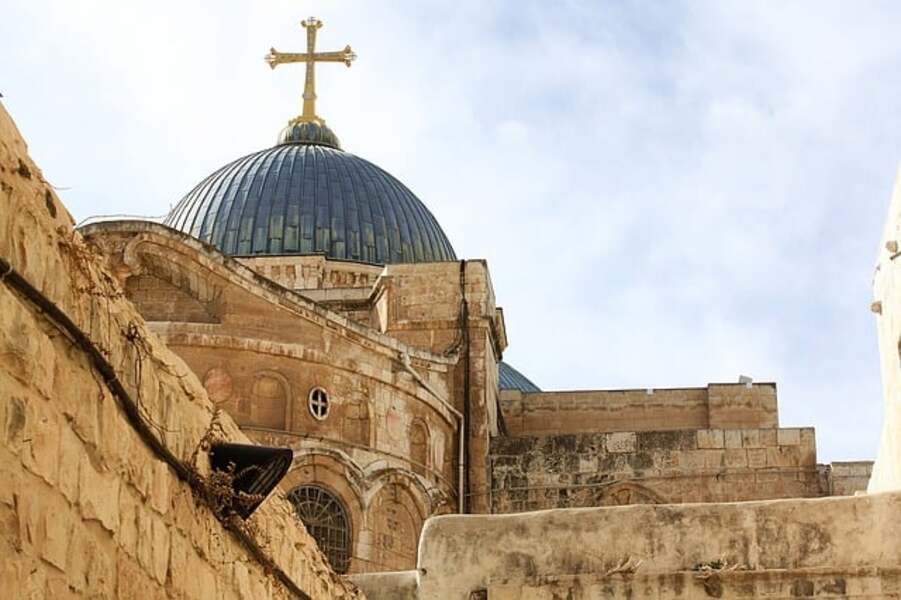
Source: Pixabay
To this day, the exact location of Jesus’ burial has yet to be proven archaeologically. However, historians agree that the tomb is in the Edicule in the Church of the Holy Sepulchre. Embark on a journey through time to uncover the burial site of Jesus, arguably the most influential figure in history.
Unveiling the Tomb of Jesus: Uncovering the Mystery of the Holy Sepulchre
Jesus, the Son of God and the founder of Christianity, is believed to have been born in Bethlehem, Palestine, around the year one and died in Jerusalem (the current capital of Israel) in the year 29.
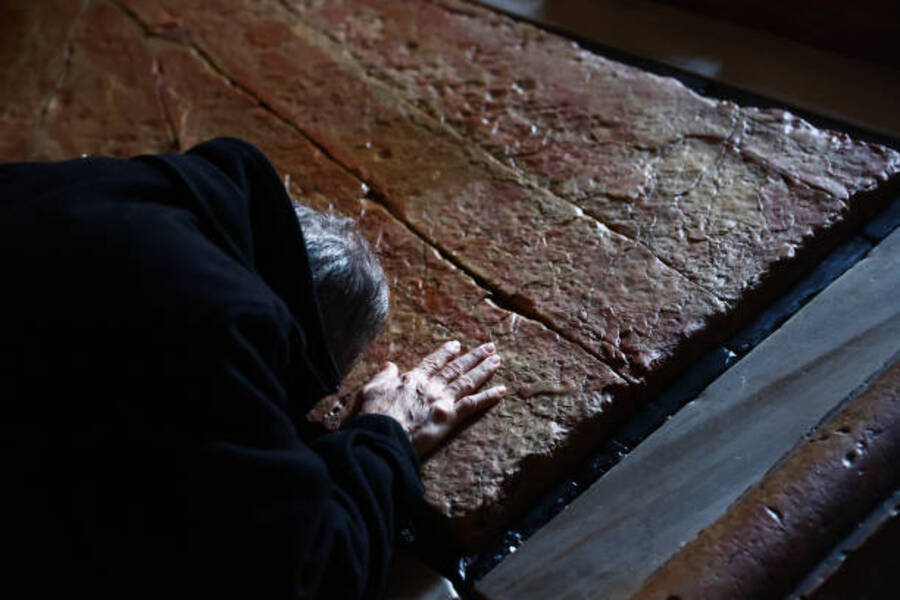
Source: Jakub Porzycki/NurPhoto via Getty Images
The tomb of Jesus, one of the holiest sites in Christianity, is encased in structures similar to a Russian nesting doll. Historians believe Jesus was laid to rest in a cave carved from a rock wall.
The Incredible Odyssey of Helena and Eusebius
In 326 CE, Constantine the Great ordered the construction of a church to house his burial site. But he also had a divine mission – to find the exact location of Jesus’ tomb. His mother, Helena, was entrusted with this task.
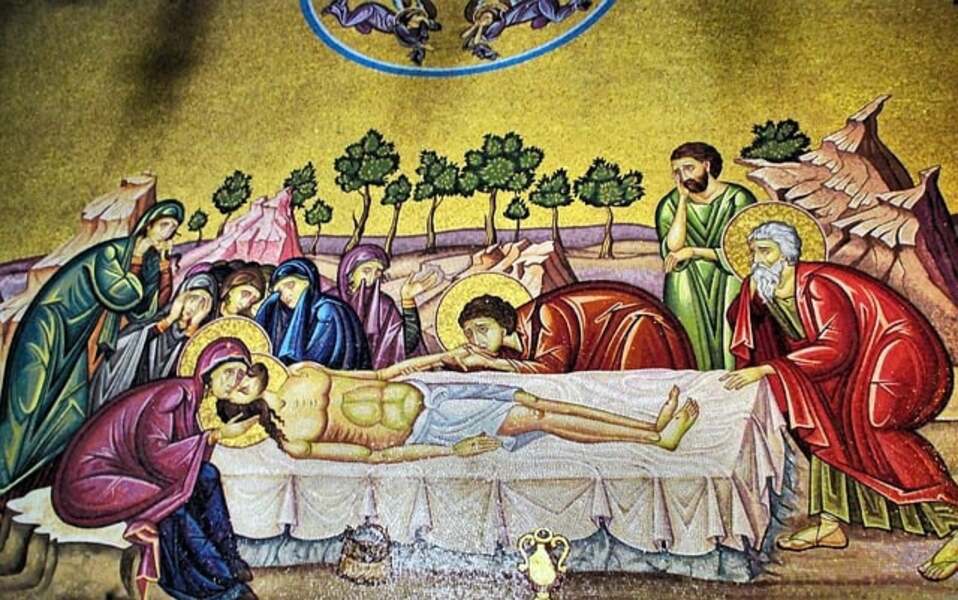
Source: Pixabay
Even though Jesus had died three centuries before, Helena and her companion, Eusebius, a bishop in the area, refused to give up. After an incredible odyssey, they finally located a Roman temple believed to be the burial site of Jesus.
The Tomb of Jesus: An Excavation to the Roman Temple
Exploring the depths of a Roman temple, excavators discovered a limestone tomb beneath it. To reveal the interior, the top of the cave had been removed. Afterward, Constantine constructed the Edicule around it.
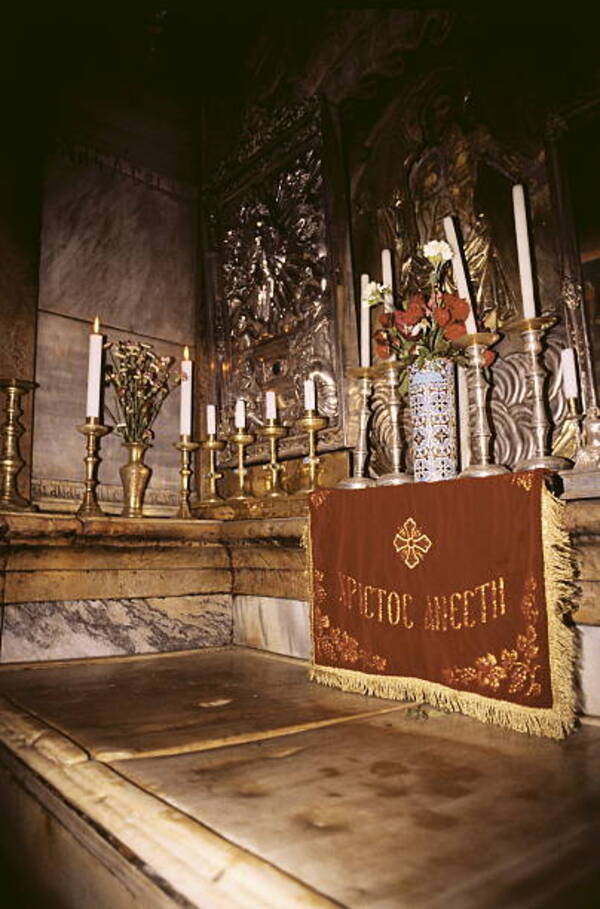
Source: Pixabay
This tomb was said to have a long shelf or burial bed made of limestone – a Jewish tradition – where Jesus’ body was laid out after being taken down from the cross. This ancient discovery offers an interesting insight into the life of Jesus and the burial practices of his people.
A Monument of Faith
For centuries, the Church of the Holy Sepulchre in Jerusalem underwent numerous changes and reconstructions due to wars and the Crusades. After the bell tower collapsed in 1545, the Franciscan Friars began their restoration project.
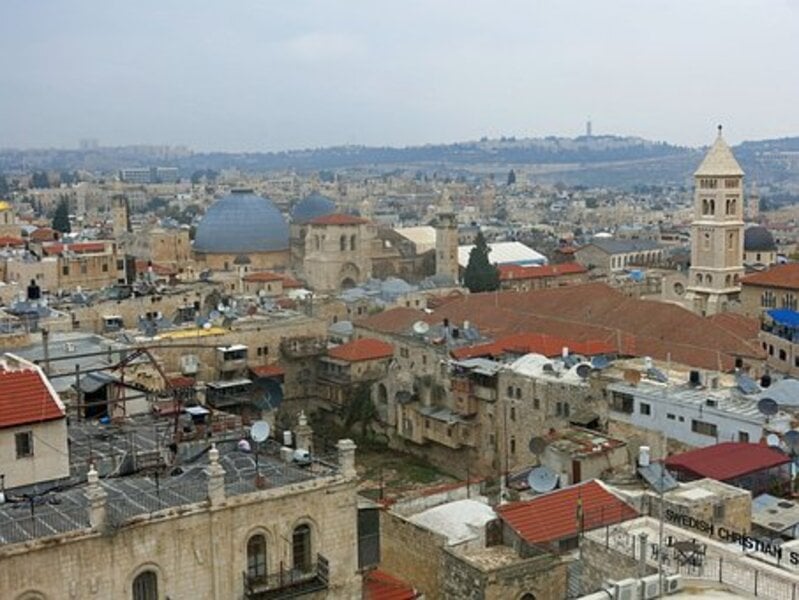
Source: Pixabay
To safeguard the tomb of Jesus, they installed a marble slab over the burial site in 1555 and kept it sealed ever since, not wanting visitors to touch this sacred site. This remarkable shrine remains a popular destination for pilgrims from across the globe.
A Timeless Challenge: Uniting Three Denominations to Restore the Church of the Holy Sepulchre
For centuries, the Church of the Holy Sepulchre, the most important Christian holy site, has been subjected to water and structural damage, leading to a great deal of decay.

Source: Dominika Zarzycka/NurPhoto via Getty Images
But renovating the church has proven to be challenging as its custodianship is shared by three major Christian denominations: the Roman Catholic, the Greek Orthodox, and the Armenian Apostolic. Over the years, these denominations have struggled to find common ground, making the restoration of the church no easy feat.
The Immovable Ladder: How Three Denominations United to Protect Jesus' Tomb
For centuries, the three denominations were locked in a debate over a Lebanon cedar ladder perched above the church’s entrance. Unable to reach a consensus, the ladder was simply allowed to remain as it was, thus giving it the name “the immovable ladder.”
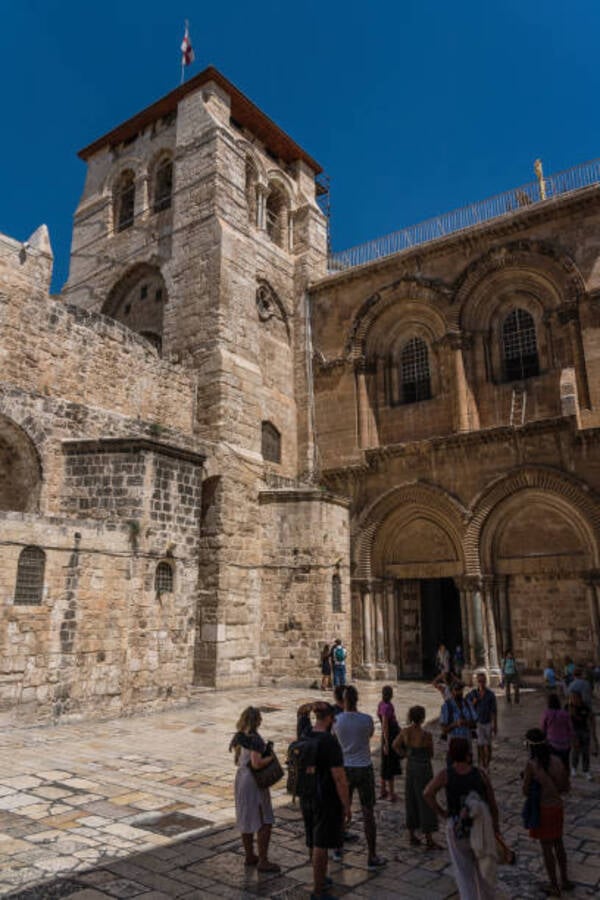
Source: Jon G Fuller/Eye Ubiquitous/Universal Images Group via Getty Images
In the same vein, this was extended to the tomb of Jesus. No one wanted to risk something so historically and spiritually significant, so the church and the tomb were left untouched despite their deterioration.
Unveiling the Mystery of Jesus' Tomb
A momentous project to preserve and restore the traditional site of Jesus’ tomb was undertaken, with scientists from the National Technical University of Athens leading the way.
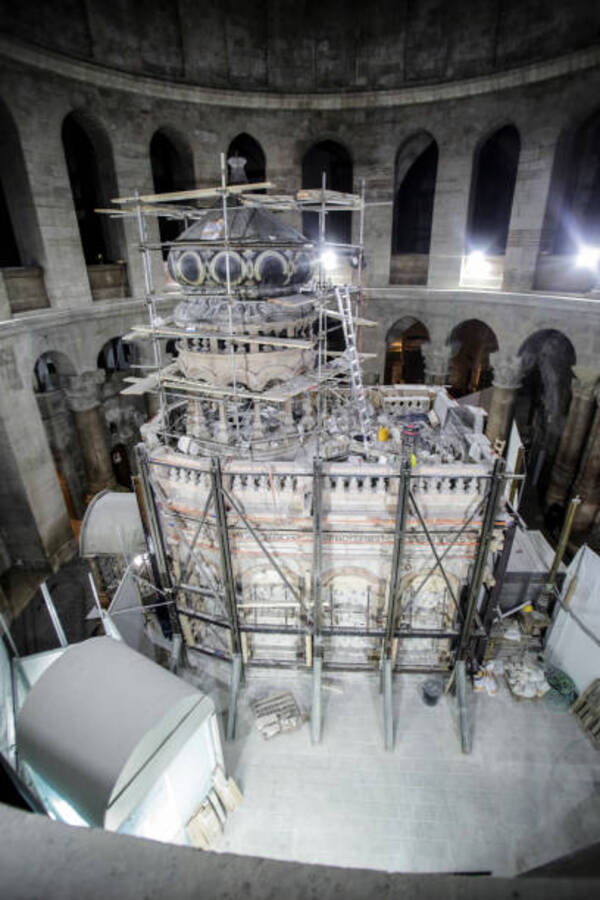
Source: Nicolas Economou/NurPhoto via Getty Images
Despite their differences, the monks and priests had concluded that it was time for another cleanup. With archaeologists from around the world eagerly awaiting the revelation of what was inside, the restoration project promised to uncover mysteries that had been hidden for centuries. What wonders would be revealed?
Uncovering Christianity's Greatest Mystery: The Edicule Excavation
Biblical archaeology is an ever-growing field dedicated to revealing or disproving historical truths about places and events mentioned in the Bible. From King Herod’s palace to Noah’s Ark, many excavations have been undertaken.
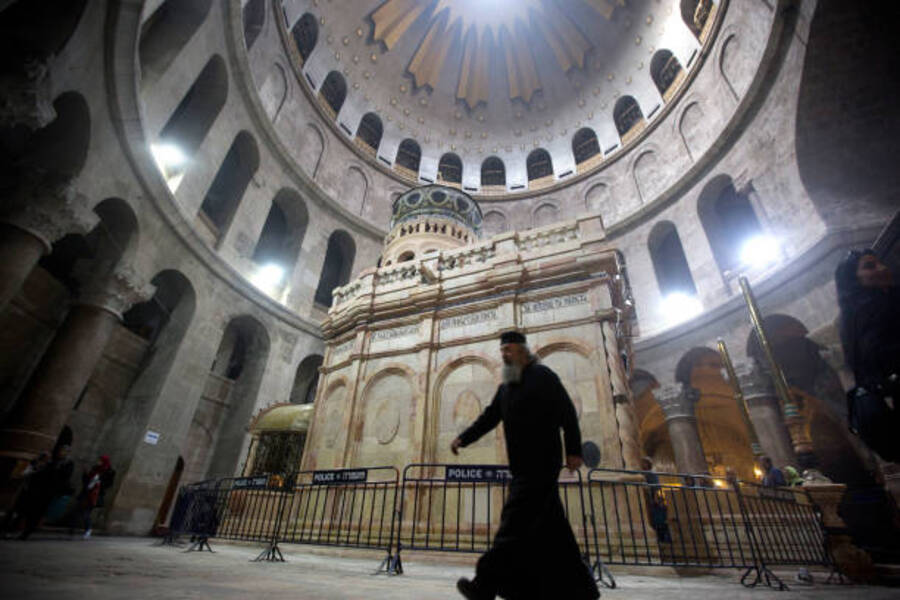
Source: Lior Mizrahi/Getty Images
But a team of archaeologists embarked on the most audacious mission yet: to prove or disprove whether the Edicule in the Church of the Holy Sepulchre is the final resting place of Jesus. With the help of modern technology, their findings will have a huge impact on Christianity.
Discovering the True Jesus Tomb: Exploring the Church of Holy Sepulchre
For centuries, the Church of Holy Sepulchre has been shrouded in mystery. Natural disasters, wars, and other external factors have caused historians and scientists to question whether the Edicule is the burial site of Jesus. In 70 CE, Jerusalem was destroyed during the First Jewish-Roman War, leaving few physical clues behind.
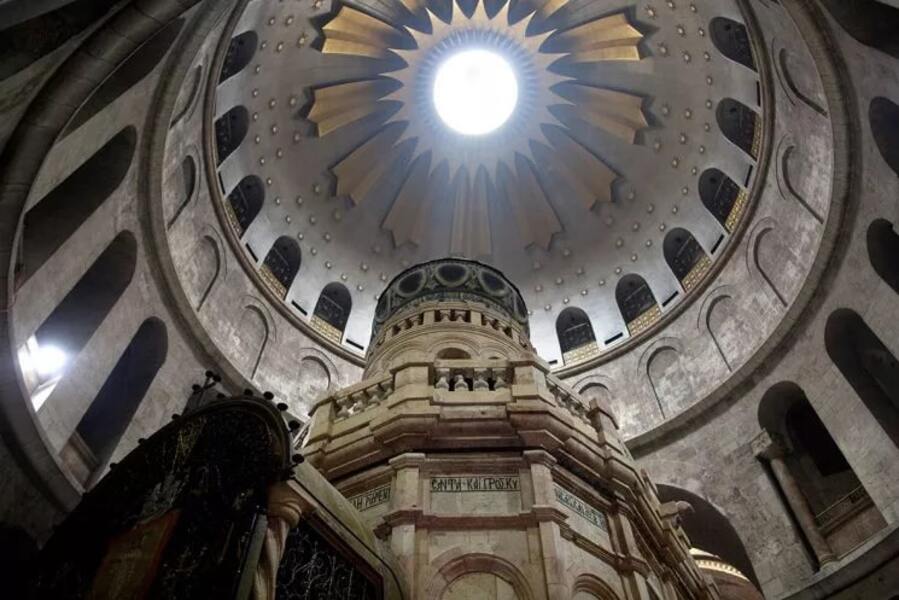
Source: Lior Mizrahi/Getty Images
However, two crucifixion sites were uncovered, one in 1968 near Jerusalem, and one in 2018 in Italy, providing more evidence that the Edicule may hold the truth. Join us as we uncover the mysteries of the Church of Holy Sepulchre and discover the real tomb of Jesus.
The Miracle of the Edicule: How a Burial Site Survived Centuries of Destruction
For centuries, the authenticity of the Edicule, a burial site believed to be the tomb of Jesus Christ, has been questioned. How could it have remained in the same location after the Church of the Holy Sepulchre had been destroyed multiple times and bore the scars of multiple attacks?
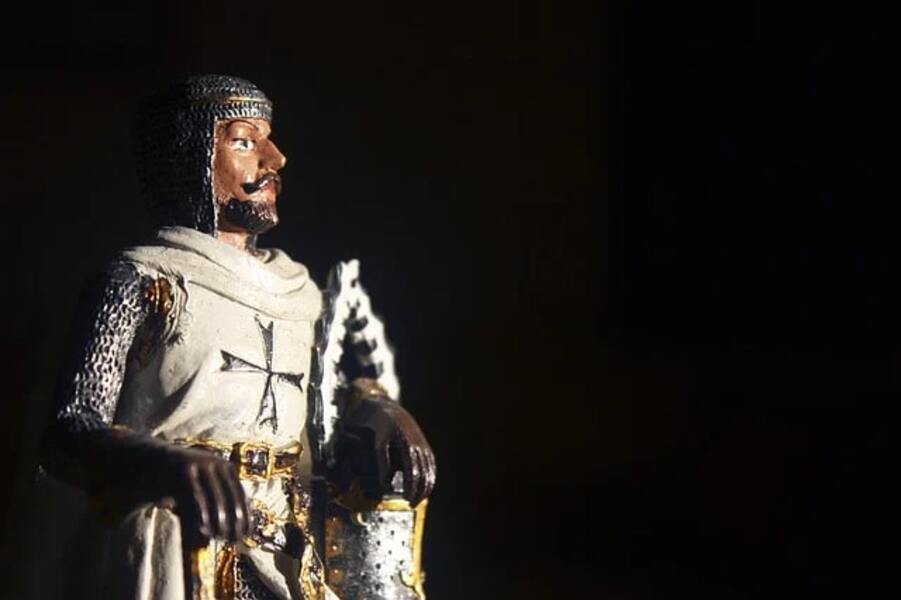
Source: Pixabay
Many historians have assumed that the Edicule must have been destroyed, yet a miracle occurred – it survived. Rediscover the miracle of the Edicule and the story of how it endured centuries of destruction.
The Hidden Mysteries: The Excavation of the Church of the Nativity
For decades, the Church of the Nativity has been shrouded in mystery. Archaeologists have long been intrigued by its origins, and the first excavation happened during the 1970s, led by Virgilio Canio Corbo, a Franciscan priest, and archaeologist.
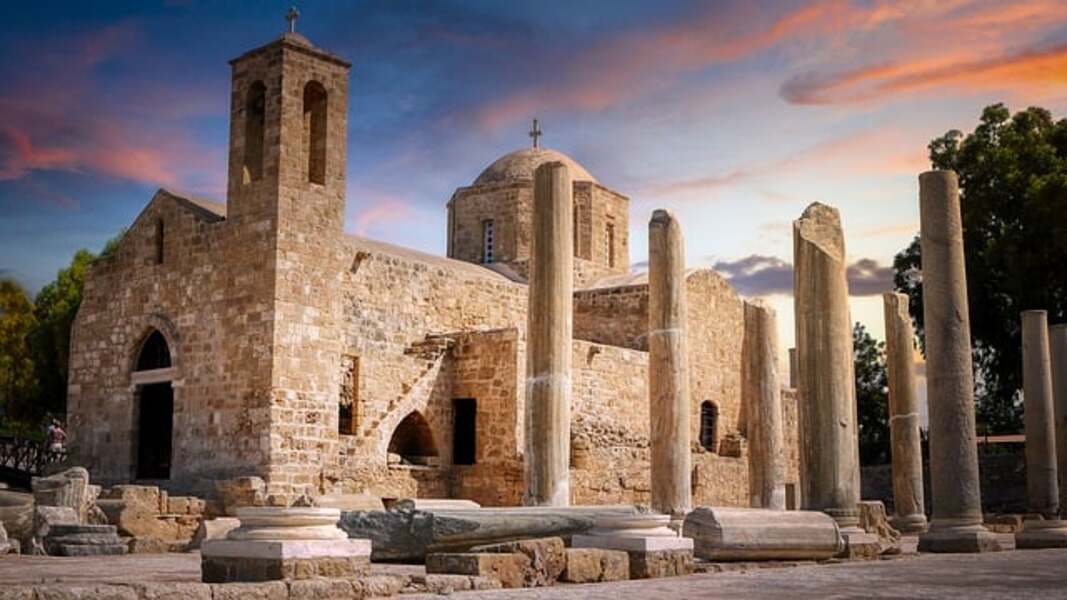
Source: Pixabay
The team’s findings revealed that the church was built to cover up a pre-Christian religion, and it was discovered to have been a temple to either the Roman god Jupiter or the goddess Venus. More recently, a new excavation team has been assembled to uncover the secrets of this ancient sanctuary.
The Mysteries of Yesteryear: Exploring the Edicule of the Church of the Holy Sepulchre
Dating back to the 2nd century CE, the Edicule of the Church of the Holy Sepulchre has captivated visitors for centuries. Built by Emperor Hadrian, excavations in the 20th century revealed rock tombs, an ancient limestone quarry, and other artifacts congruent with the description of Jesus’ tomb in the Bible.
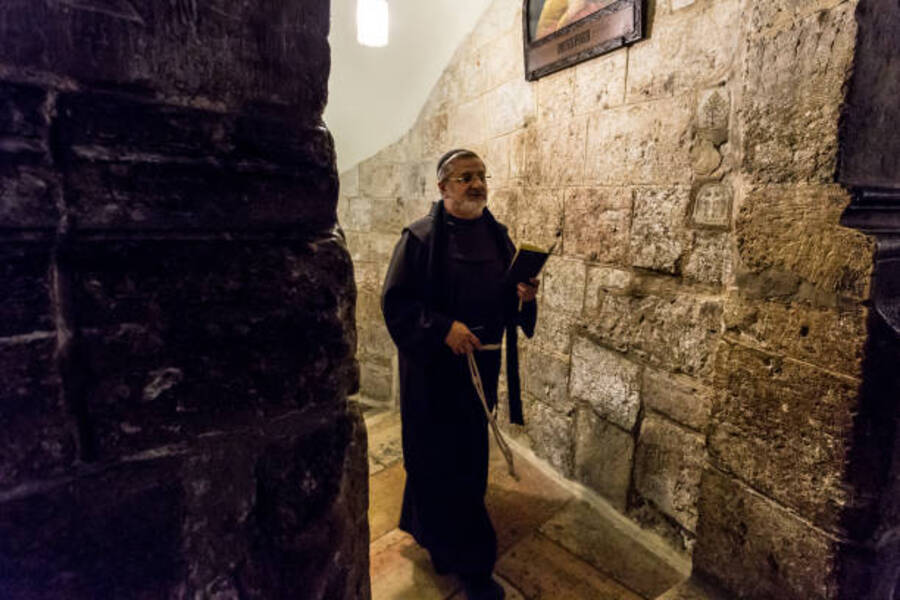
Source: Dominika Zarzycka/NurPhoto via Getty Images
Corbo suggested that the church’s enclosure should be in the same place as the temple’s enclosure, and if that’s true, this lends support to Edicule being in the same place as it always was.
The Mystery of Jesus' Burial Site: Recent Discoveries at the Edicule
For centuries, the Church of the Holy Sepulchre has been revered as the location of Jesus’ tomb. But this claim was challenged due to apparent inconsistencies between the Bible and the current Edicule’s location.
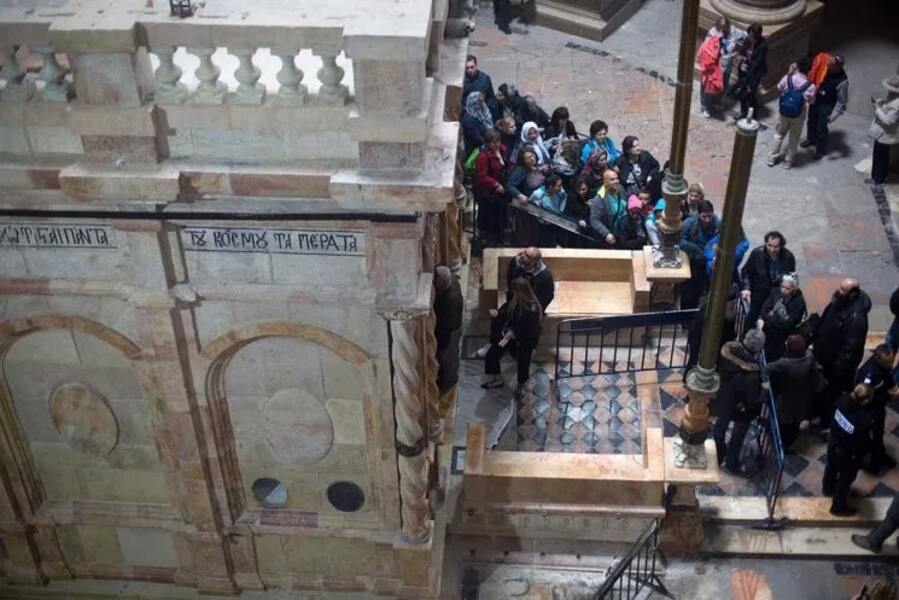
Source: Lior Mizrahi/Getty Images
Recent discoveries, however, have lent legitimacy to the Church of the Holy Sepulchre housing Jesus’ tomb by revealing that the city walls have expanded over time. Thus resolving the dilemma of the Edicule today being inside the city walls when the Bible states that the burial took place outside the city walls.
The Ravages of Time: Restoring the Church of the Holy Sepulchre
The Church of the Holy Sepulchre, a revered religious monument, was impacted by time and had to be restored. The monks who allowed an Athens-based team to undertake the restoration had a few conditions.
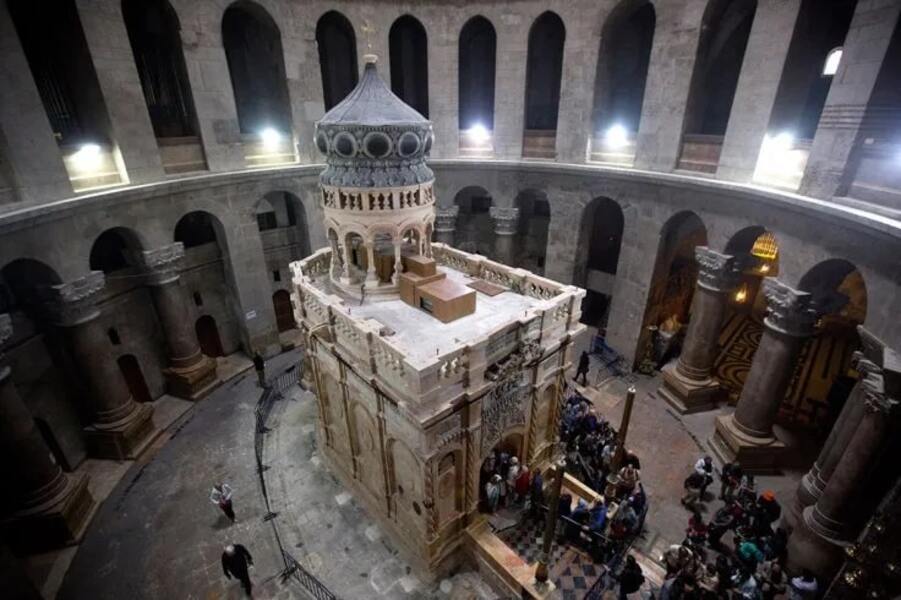
Source: Lior Mizrahi/Getty Images
Primarily, the existing structure should be maintained. First, the excavation team targeted the water damage and mold, followed by reinforcing the Edicule’s exterior and finally excavating Jesus’ tomb. The mission was to bring this ancient and hallowed place back to its former glory.
Momentous Discovery - Uncovering the Edicule
After a painstaking ten months of manual restoration, the Edicule was brought to its original glory. To ensure its stability for centuries to come, modern screws were inserted to reinforce the foundation and walls.
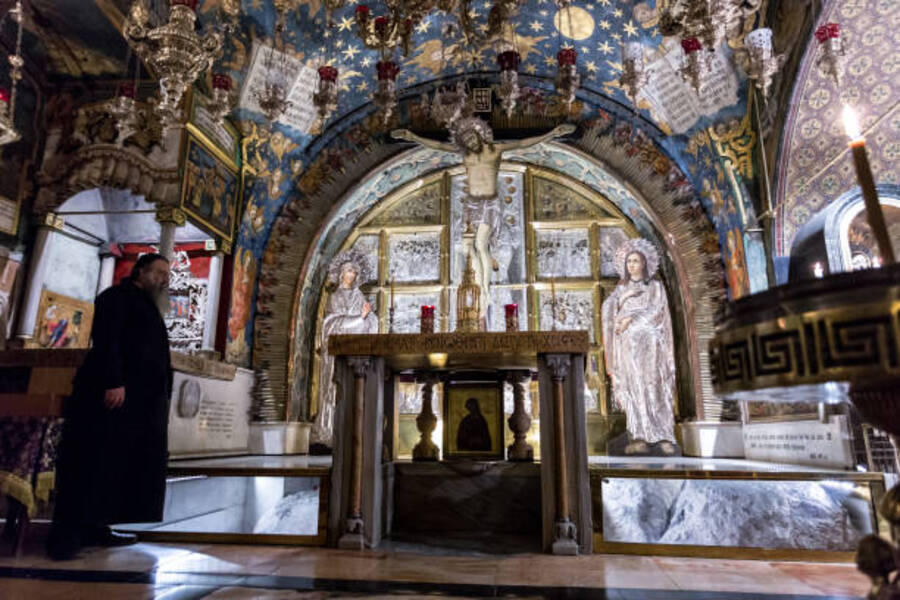
Source: Dominika Zarzycka/NurPhoto via Getty Images
The most riveting moment of the renovation came when the excavation team got to the slab of marble that had been sealed by Franciscan monks centuries ago and moved it for the first time. This was a moment that the team and the monks had been looking forward to most during the entire restoration process.
Unearthing an Ancient Mystery: Uncovering the Secrets of a Burial Chamber
After toiling for 60 hours without pause, the team finally removed the slab of marble which had been in place for hundreds of centuries. Unprepared for the debris and dirt beneath, the archaeologists had to dig and sift for hours to uncover a hidden mystery.
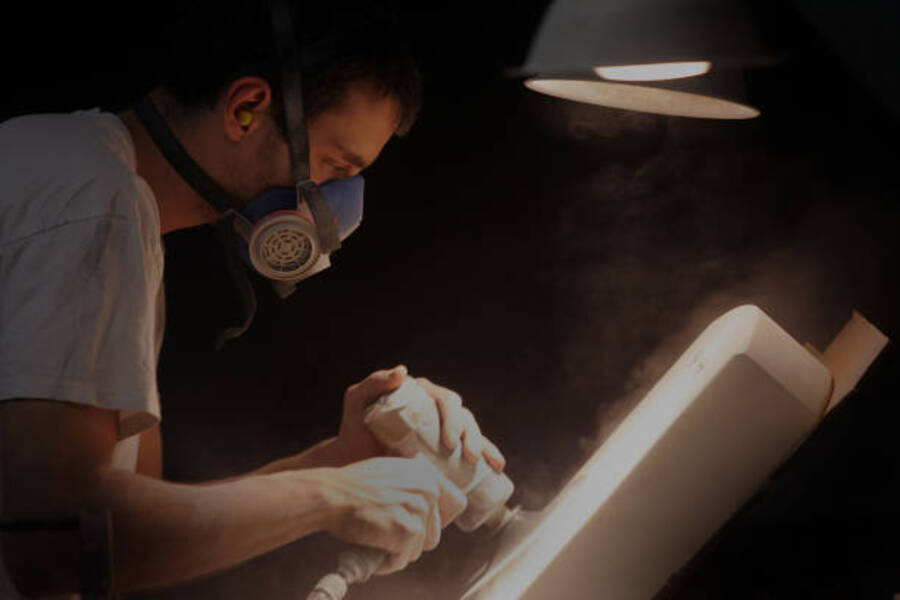
Source: Joe Raedle/Getty Images
Finally, their hard work paid off when, underneath the rubble, a new surprise was revealed. What secrets did this ancient burial chamber contain? Only further exploration could show the truth.
Unveiling a Lost History: Astonishing Discovery of a Hidden Cross
The Franciscan monks had placed a white marble slab in 1555 and, beneath it, a hidden surprise waited to be discovered. Unbeknownst to the team, there was another layer of marble, this time a much older one with a striking gray hue.
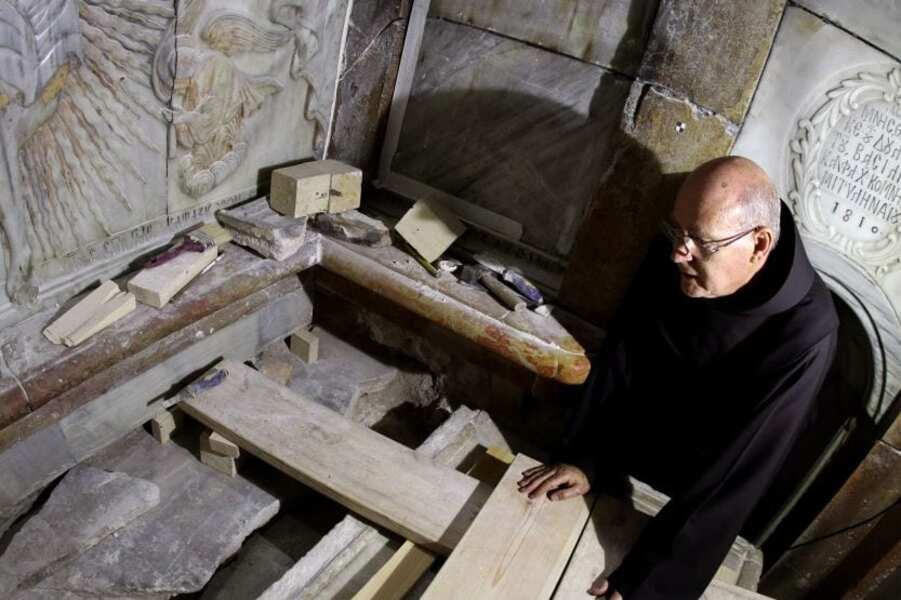
Source: Gali Tibbon/Getty Images
And embedded in it was a breathtaking sight – a cross carved in the center of the stone, revealing a long-forgotten history. This astonishing discovery left the team in awe – they knew they had discovered something truly remarkable.
The Mystery of a 500-Year-Old Marble Slab
Historians around the world were mystified by the discovery of a second marble slab. Theories abounded, including that it was a mark of the Crusaders and that the crack on its surface was caused by an attack of Arab conquerors before the Crusades.
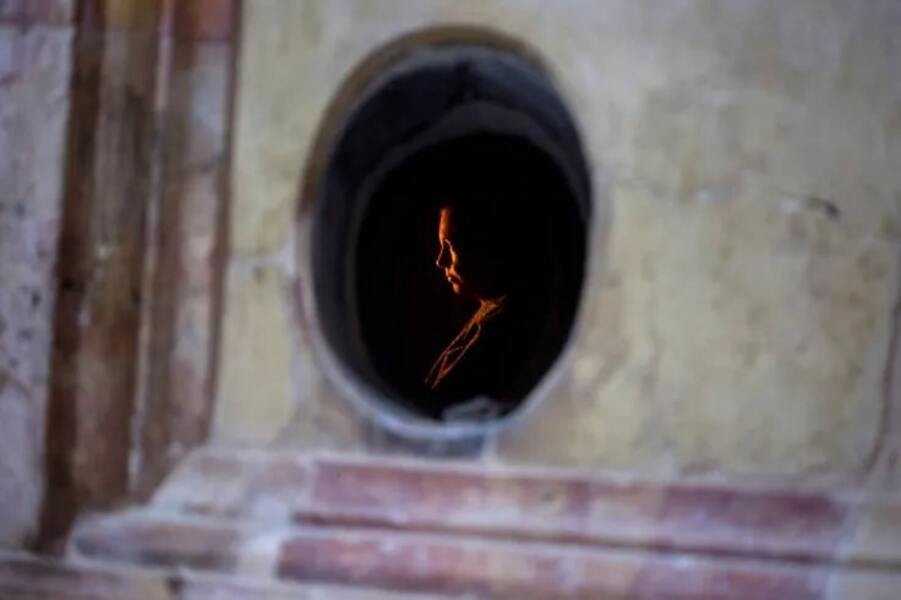
Source: Lior Mizrahi/Getty Images
While there was no consensus, one thing was certain: the marble was at least 500 years old, as old as the surrounding walls. What could it be, and what mysteries did it hold? Join the historians in the quest to unravel this 500-year-old mystery!
Uncovering the Secret Date of a Buried Marble
After months of meticulous work, the excavation and restoration team were finally ready to date the second marble slab they had found in the burial chamber. Collecting samples from the chamber, they sent them to a lab to be dated using a process called optical stimulated luminescence (OSL).

Source: Pixabay
After a year of analysis, the results were in: the exact date of the chamber was revealed. Despite the complexity of the task, the team was determined to find the true date of the slab – and they succeeded!
The Mysteries of the Church of the Holy Sepulchre
The Athens excavation team and monks were honored as the first to lay eyes on the deepest part of the burial chamber for centuries. The results revealed that the second marble slab was last exposed to light (a key part of the dating process) during the fourth century.
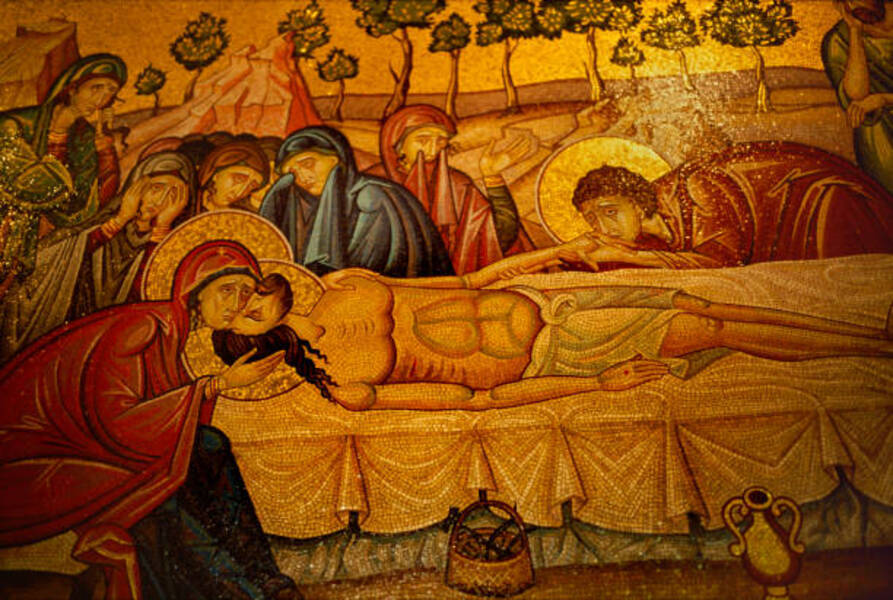
Source: Reza/Getty Images
This was around the same time when the first Church of the Holy Sepulchre was built by Constantine. Analysis of the mortar sample from the wall of the tomb also matched the slab. This discovery was a huge development as it confirmed the veracity of the Church of the Holy Sepulchre’s Edicule.
The Results Were Finally Revealed
After nearly a year of waiting, the results of the study have finally been revealed. They have forever changed the way we view the Church of the Holy Sepulchre and its Edicule, a burial chamber believed to contain the remains of Jesus Christ.
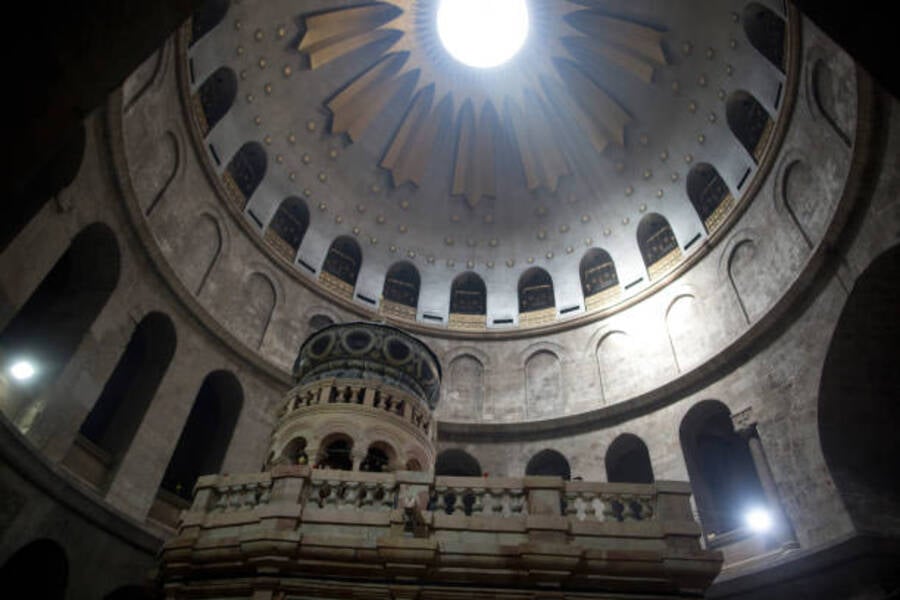
Source: Lior Mizrahi/Getty Images
Dating the second marble slab inside the Edicule provided a big breakthrough one that scholars, historians, scientists, and archaeologists are now examining and further exploring. Unfortunately, the restoration of the church was already complete and the chamber was again sealed, making it highly unlikely that the marble slabs will be opened anytime soon.
Converting Critics: Recent Discoveries Prove the Authenticity of Jesus' Tomb
After the expedition to the Edicule, even the most ardent critics have been forced to reassess their position on the authenticity of the site of Jesus’ tomb. While hard evidence of Jesus’ burial at the site is yet to be uncovered, the recent discoveries have given no reason to doubt its validity.

Source: Artur Widak/NurPhoto via Getty Images
Even though Protestants and some archaeologists remain adamant that Jesus’ tomb is located in the Garden Tomb outside of Jerusalem, no other site can lay as strong a claim to being the burial site as this one.
